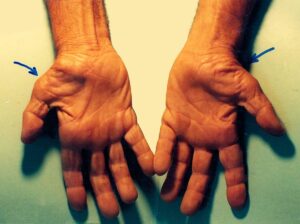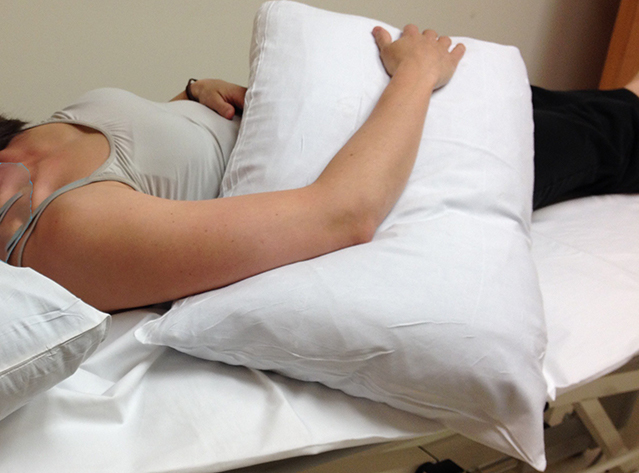Do you suffer from carpal tunnel syndrome? If so, you know how difficult it can be to get a good night’s sleep. In this blog post, we will discuss 12 tips that can help improve your sleep and alleviate the symptoms of carpal tunnel. Follow these tips and you should start to see a difference in the way you feel during the day.
Contents
What Is Carpal Tunnel?

Carpal tunnel is a condition that causes pain, tingling, and numbness in the hand and arm. The carpal tunnel is a narrow, passageway in the wrist made up of bones and ligaments. The median nerve runs through this tunnel from the forearm to the hand. This nerve controls the muscles in the thumb and provides feeling to the thumb, index finger, middle finger, and half of the ring finger.
Carpal tunnel syndrome (CTS) occurs when there is pressure on the median nerve due to swelling or inflammation. This can happen for a variety of reasons including repetitive motions of the hands or wrists, arthritis, pregnancy, diabetes, and thyroid problems. CTS can cause pain and numbness in the hand and wrist and can make it difficult to perform everyday tasks.
Does Carpal Tunnel Affect Your Sleep?

There are many negative effects that carpal tunnel can have on your sleep. Carpal tunnel can cause pain and numbness in the hand and wrist which can make it difficult to fall asleep and stay asleep. CTS can also lead to fatigue during the day which can make it hard to get a good night’s sleep. In addition, CTS can cause anxiety and depression which can further disrupt sleep.
Sleep gets affected by Carpal Tunnel Syndrome in the following ways:
1. Wrist pain and numbness can make it difficult to fall asleep.
2. CTS can cause fatigue during the day which can make it hard to get a good night’s sleep.
3. Anxiety and depression caused by CTS can further disrupt sleep.
4. Carpal tunnel can cause sleep apnea, a condition where breathing stops and starts during sleep.
5. CTS can also cause restless leg syndrome, a condition that causes an urge to move the legs while at rest or sleeping.
6. Finally, carpal tunnel can lead to headaches, neck pain, and shoulder pain which can all interfere with sleep.
How to Sleep With Carpal Tunnel?

There are a few things you can do to help make sleeping with carpal tunnel more comfortable. Taking steps to reduce the amount of pressure on your median nerve can help ease pain and numbness. Here are 12 tips for sleeping with a carpal tunnel:
Use a Pillow
One of the most common ways to reduce pressure on the median nerve is to use a pillow. Placing a pillow under your wrist can help take the pressure off of the nerve. In addition, placing a pillow between your knees can also help reduce pressure on the nerve. Sometimes there are special carpal tunnel pillows available that are designed to help reduce pressure on the median nerve.
Wear a Splint
Another way to reduce pressure on the median nerve is to wear a splint at night. A splint is a device that holds your wrist in a neutral position and prevents it from moving. This can help reduce pain and numbness by taking the pressure off of the median nerve. Wearing a splint at night is often recommended for people with carpal tunnel syndrome.
Use a Heating Pad or Ice Pack
Applying heat or ice to your wrist can help reduce pain and inflammation. Heat can help relax the muscles and ease the pain. Ice can help reduce inflammation. You can alternate between heat and ice or use whichever one seems to work better for you.
Stretch Your Hands and Wrists
Stretching your hands and wrists can help reduce pressure on the median nerve. There are a variety of stretches that you can do. One simple stretch is to hold your hand out in front of you with your palm up. Use your other hand to gently pull your fingers back toward you. Hold this stretch for 30 seconds. Repeat this stretch several times throughout the day.
Do Exercise
Exercising can help improve your symptoms by strengthening the muscles around the median nerve. This can help reduce pressure on the nerve and improve blood flow. Exercise can also help reduce inflammation. Try to do some form of exercise for at least 30 minutes a day, five days a week.
Eat a Healthy Diet
Eating a healthy diet is important for many reasons. Eating healthy foods can help reduce inflammation and pain. In addition, eating healthy foods can help you maintain a healthy weight. Being overweight puts additional pressure on the median nerve which can make your symptoms worse. Try to eat plenty of fruits, vegetables, lean proteins, and whole grains.
Reduce Stress
Stress can make your symptoms worse. Try to find ways to reduce stress in your life. This may include yoga, meditation, or deep breathing exercises. In addition, try to get enough sleep and exercise regularly. Reducing stress can help improve your overall health and well-being.
Quit Smoking
Smoking is bad for your health for many reasons. One of the reasons is that smoking can cause inflammation. This can make your symptoms worse. If you smoke, quitting is one of the best things you can do for your health.
Talk to Your Doctor
If you are having difficulty sleeping with carpal tunnel syndrome, talk to your doctor. They may be able to recommend other treatments that can help. In addition, they can check to see if any other underlying conditions could be causing your symptoms. Getting treatment early can help improve your symptoms and prevent the condition from getting worse.
Try To Sleep In A Different Position
If you usually sleep on your stomach or side, try to sleep on your back instead. This will help take the pressure off of your median nerve. You can also place a pillow under your knees to help reduce pressure on the nerve. If you are having trouble sleeping in this position, talk to your doctor. They may be able to recommend other positions that would be more comfortable for you.
Sleeping on your stomach can put additional pressure on your wrists and hands. This can increase pain and numbness. Instead, try sleeping on your back or side. This will help take the pressure off of your median nerve. When you are on your side, you can also place a pillow between your knees to help reduce pressure on the nerve.
Get Plenty Of Rest
Getting enough rest is important for many reasons. When you are well-rested, your body is better able to heal itself. In addition, getting enough rest can help reduce stress and pain. Try to get at least eight hours of sleep every night. If you have trouble sleeping, talk to your doctor. They may be able to recommend treatments that can help.
Take Breaks Throughout The Day
If you have a job that requires you to use your hands a lot, it’s important to take breaks throughout the day. Taking breaks will help reduce the amount of time your hands are in the same position and can help reduce pressure on the median nerve. In addition, taking breaks will give you a chance to stretch your hands and wrists.
Carpal tunnel syndrome is a condition that can cause pain, numbness, and tingling in the hands and wrists. The symptoms can make it difficult to sleep. However, some treatments can help. If you have carpal tunnel syndrome, talk to your doctor about the best way to treat your symptoms. In addition, try some of these.
Conclusion
Carpal tunnel can make it difficult to get a good night’s sleep. If you have carpal tunnel, there are some things you can do to help you sleep better. There are many ways to sleep with carpal tunnel and get a good night’s sleep. These tips can help you get the most restful sleep possible.
Sometimes, the best way to sleep with carpal tunnel is to sleep on your back. This position takes the pressure off of your wrists and can help to ease the pain. If you have trouble sleeping on your back, you can try sleeping on your side. Be sure to use a pillow between your legs to keep your spine in alignment.
Physical Therapy help patients recover from pain. If you’re experiencing Back pain, Shoulder pain, Knee pain, Neck pain, Elbow pain, Hip pain, or Arthritis pain, a physical therapist at MantraCare can help: Book a physiotherapy session.


